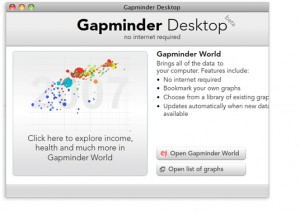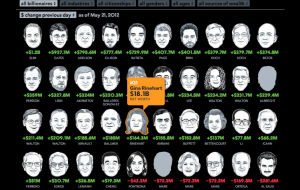Dataset Gapminder by Hans Rosling
Okay, so this isn’t one dataset, but it is an awesome place to find the standard reliable datasets and see them visualized over time.
Hans Rosling is my absolute favorite statistician! He has given 4 TED talks, which I think is more than anybody else. His basic argument is that common knowledge is generally 20 to 50 years behind the data. His primary example of this is the idea of the strict divide between the developed and non-developed world. Gapfinder is a simple tool that allows you to pick both your x and y data sets from a list of reliable sources and see how it affects every country over time.
Provocative: ceibas: sigma fugue by by Evan Meaney
In this piece Meaney combined damaged home videos from recovered hardrives to make ceibas: sigma fugue
As someone who recently lost every last bit of a terabyte hard drive I find this piece by Evan Meaney quite provocative. It is overly simplistic to construct a metaphor between human memory and machine memory, seeing how human memory literally rebuilds a memory every time it is recalled, whereas a machine must simply access the correct memory space. However, Meaney reminds us of the phycological role of forgetfulness and decay.
Well-crafted Bloomberg’s Billionaires Index by Christopher Cannon
This visualization shows the 100 most wealthy billionaires in the world. all the interactions are very elegantly done.
This data set is certainly not the most creative, however it is very elegantly and intuitively displayed. There are several levels of interaction possible embedded within the visualization; on first view, it is easy to engage because there is a simple grid of numbered faces. You can also easily see the most basic piece of information by hovering over each face. And finally it is also possible to to see more detailled information by clicking into each face. On a side note, I find it very disturbing that all the women on the list inherited their money and none are self-made.

